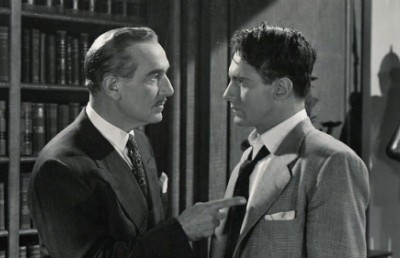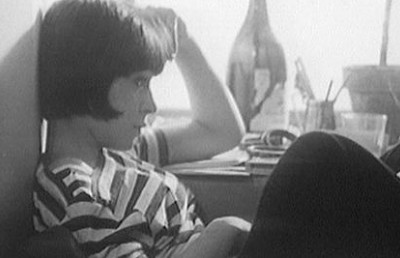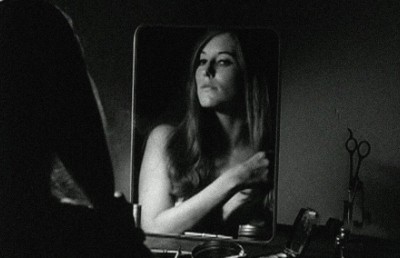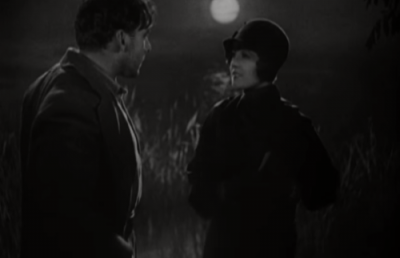Imagery of a Canadian Babylon: Themes of Religion, Gender and Class in Rude
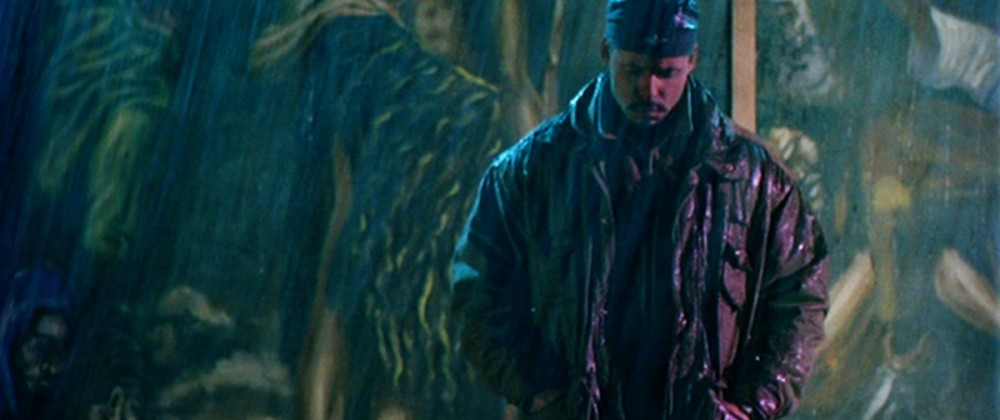
In Rude (1995), Clement Virgo employs a complex web of visual and auditory symbols to express the ways in which life in a black community in 1990s Toronto intersects with religion, gender, and class. These symbols are closely associated with themes of personal redemption and salvation, and brought to life by a range of characters whose journeys are linked by their attempts to escape darkness and walk an enlightened path, their common yearning for redemption accentuated by a narrative that takes place over an Easter weekend. Virgo offers a fascinating kaleidoscope of black culture, particularly that of the Caribbean, opposing some of its sacral aspects, such as Rastafarianism and gospel music, to sinful white culture, embodied by the main villain, not too subtly named Yankee, an American who collects African art and a Satanic tempter who collects black souls. The filmmaker, however, does more than accuse white people of corruption and give black characters an occasion to redeem themselves. He shows the complex world of an African Canadian community, focusing on the conflicts and deep struggles faced by an ex-convict, a woman going through a post-abortion depression, and a young boxer coming to terms with his sexuality. Toronto becomes a Canadian “Babylon,” a term that in Rastafarianism is usually associated with the Western world, particularly referring to the capitalistic and consumerist frenzy typical of the generic Western city, and in this way making Toronto stand in for the various black African diasporas found throughout the world, while cultural artifacts, including painting, music and the performance art of a radio announcer, comment on the diasporic journey of the film’s protagonists, and, by inference, on the African immigrant experience in “Babylon.” While these are simply three tales of personal enlightenment through cultural re-appropriation and a return to roots in response to the experience of life in a Toronto ghetto, the ability of cinema to universalize individual experiences marks its ambition to be something more as well.
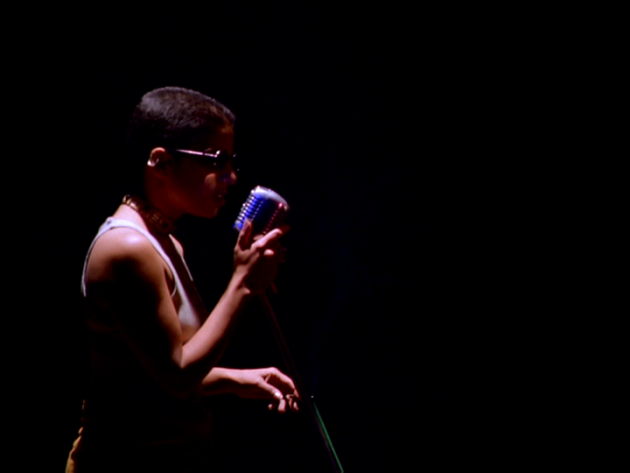
George Melnyk argues that Virgo’s perspective is that of a non-European immigrant, and the movie, therefore, is based on his personal experience of white dominance in the urban context of Toronto. In that regard, Rude seems to be born from a profound necessity to re-appropriate urban spaces, re-define the meaning of “blackness” and, arguably, also “Canadianness,” giving a new voice to a misrepresented community, which is as ”faceless” as Rude, the pirate radio DJ who serves as the film’s chorus (139). Rude, according to Melnyk, is a sort of “deity,” whose voice is meant to provoke and inspire, rather than soothe, the spirits of fellow members of the black Caribbean community (141-42). Like a deity, she also functions as a unifying force, speaking from above to the diverse members of a profoundly heterogeneous community (142).
In this regard, the figure of Rude the radio DJ, as well as Virgo himself as filmmaker, can be associated with the “contemporary griot,” as seen in the work of African film director Ousmane Sembene (Martin, 126-27). Sembene defined himself as a “griot of modern times,” a figure who shoulders the burden of a collective historical memory to divulge and pass on to the following generations, and a “griot” figure can be found in all his films (127). Rude, like Sembene and his griot characters, is a storyteller and, as a sort of “deity,” she observes the reality around her, describing it as it is; as a true griot, she does not “embellish things,” given the time of crisis in which she finds herself operating (126). A further comparison could also be drawn between Rude and Samuel L. Jackson’s character in Do The Right Thing (1989, Spike Lee), Mister Señor Love Daddy. The latter, in fact, offers an almost sacral perspective, just like Rude, watching and commenting on reality without taking active part in the conflicts, observing from their unplaceable offices in semi-darkness, yet seemingly aware of everything that happens on the streets.
Sheila Petty argues that the black diasporic experience in Canada cannot be described as a simple shared experience, since the term refers to different people coming from different countries, migrating to North America at different times (226-27). The conflict, therefore, cannot be reduced to a tension between black and white communities, but also needs be traced within the African Canadian community itself (228-29). The solution to that conflict, however, cannot simply consist of making Africa the unifying cultural touchstone for the community (229). She suggests instead that focusing mainly on the Caribbean model of community, as Virgo did, could help understand the fluidity of African identity and the existence of “multiple black Canadian identities,” as seen in Rude, which Petty defines as “the beginning of black Canadian cinema” (229). Although, as Melnyk argues, focusing only on the black Caribbean community might result in a narrow representation of blackness, as it appears to exclude all the other minorities living in Toronto, the city itself becomes the common factor shared by these disparate identities, both in terms of the shared experiences of racism and the general idea of becoming invisible behind a white facade (143). The city to which Virgo gives visual life, in fact, is mutated into “Babylon,” creating a parallelism between the African diaspora and the Jewish exile narrated in the Bible, of being forced to leave their motherland behind and settle in a foreign land that had been appropriated by Europeans (Melnyk, 153). Therefore, the interactions between the African Canadian community and the white characters in the movie often seem profoundly hostile, and subvert the idea of a welcoming urban landscape (Petty, 233).
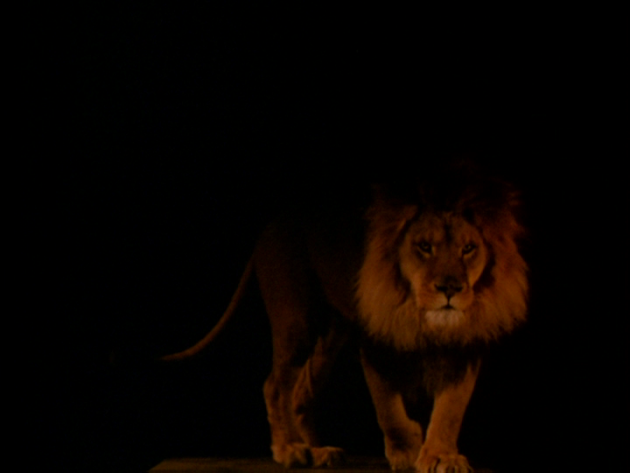
Rastafarianism, and specifically the idea of Rastafarian redemption, plays a major role in the movie, expressed through the use of music, Rude’s radio commentaries, and one of the film’s recurrent symbols, the majestic lion (232). This is a reference to “The Conquering Lion of Judah,” which is associated with the African diaspora: the belief that the Africans who were brought to Babylon “must live as lions” and work together to maintain the unity of the motherland, which is what Rude preaches to her audience (Yawney 2). “Living as lions” is the initial part of the Rastafarian journey to Redemption that eventually will lead the diasporic populations back to their origins and finally redeem them from the poisonous process of Westernization (2-3). In the movie, however, the characters’ challenge consists in redeeming themselves while still living the Western world, possibly trying to change the way things are. Virgo provokes the viewer in the same way Rude provokes her fellow Caribbeans, using filmmaking as a tool to finally give voice and complexity to black characters, while whiteness, embodied by Yankee, becomes synonymous with evil and corruption, an insidious obstacle along the path for Redemption.
An example of this is Virgo’s use of mise-en-scène, particularly his experiments with coloured lighting, characterized by the positive connotations of red, yellow and green, which, along with black, are “the Pan-African colors,” as well as being the colours of the Ethiopian flag. Each colour symbolizes a different aspect of Africa as a dismembered yet spiritually united territory, and together they pay homage to the struggles of its people (White 307). Those colours in particular seem to surround the character Rude, who becomes a symbol of that spiritual unity and encourages her people to stand united against Babylon. An example of this is the scene where, while Rude speaks, the colour filters juxtapose a warm golden light with a red light that illuminates half her body.
Carmen M. White notes these colours usually appear with the Lion of Judah, which is also seen as the incarnation of Emperor Haile Selassie, the ruler of Ethiopia for several decades and a symbol of strength and resistance against European oppression (308). The film, in fact, exploits this symbolic meaning and opens with the image of the lion, while Rude’s commentary introduces the viewer to Rastafarian culture, providing a context for the audience as it meets the film’s three protagonists. Each of these characters struggles with a different issue, explored both in relation to the host country as well as the minority they belong to (Petty 235). Maxine, for instance, is first presented walking on the street, carrying a mannequin. The murky lighting used in her flat creates a dark and claustrophobic atmosphere, a gloomy space in which she can hide from the world to process the abortion and reflect on her ex-boyfriend’s voyeuristic and exploitative behavior. The almost theatrically gloomy mise-en-scène is enhanced by the presence of several dismembered mannequins, lying all around the apartment and surrounding Maxine. The presence of the dismembered dummies references not only her recent abortion, but also the dismemberment of the African populations, which have become divided into several communities over centuries of diaspora. Further, her flat strongly recalls the one in Blade Runner (1982, Ridley Scott), where Deckard must spot the replicant hiding in a room full of human-like mannequins. In both cases, although, obviously, for different reasons and in different contexts, a woman disguises herself as a dummy, a comparison that in Rude becomes even clearer in a later scene where Maxine is shown sitting right next to one of the mannequins. As people look at mannequins through shop windows, Maxine has been looking at herself from her ex-boyfriend’s perspective, whose prying eye filmed her exposed body against her will. Her sin, strongly condemned by Rastafarianism, was aborting a child, whose spirit keeps haunting her, dancing and walking around her house in the shape of a little girl. As her community’s journey of Redemption consists in re-appropriating their own culture, Maxine’s personal journey consists in forgiving herself and re-appropriating her own body, which, due to her guilt, she seems to consider as empty as that of a dummy.
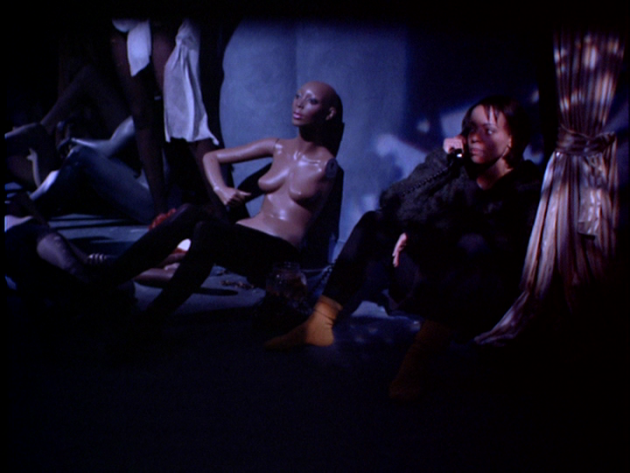
Although Rastafarianism would condemn Maxine as a sinner, Virgo’s use of religious symbolism, which Melnyk described as “hybridized” (for example, wall art that uses Christian imagery to depict the suffering and martyrdom of black people), suggests that the function of religion in the movie is not to judge and condemn, but to lift and enlighten, and to do this by drawing on both Christianity and Rastafarianism (153). To support this point, it should be noted that most of the songs that accompany Maxine’s storyline are acappella pieces taken from the gospel tradition (Harcourt 9). Gospel music is a significant component of black culture, and Christianity, in this context used as an exhortation to the wounded woman to lift her spirit, as in the lyrics of the spiritual “Farther Along,” sung on the soundtrack by the vocal group Four The Moment, reminding her, “Tempted and tried/We’re not made to wander” (Harcourt 9). Maxine must go through all that pain, in order to murder her old self and finally, like the Messiah, resurrect, free from the prying eyes of men.
In order to understand the movie’s intentions, it is important to explore the symbolic function of the art works and music that feature in it, notably the mural painted by Luke, the penitent ex-convict. In one of his first appearances on screen, Luke’s brother is threatening a young boy in a constricted and shadowy space, while on the wall behind him an image of the crucified Jesus remains half-hidden until Luke’s disembodied voice resounds from an obscure point above the staircase. Initially, his brother does not recognize him and warily stands under the image of Jesus, which is now completely visible in the frame, while holding a knife to defend himself, demanding the unknown person “to come down into the light.” Luke slowly descends the stairs and walks towards the light, leaving the darkness behind. The chiaroscuro effect created by the low-key lightning, along with the low-angle shot, gives Luke’s entrance a solemn tone, while his figure acquires an aura of mysticism that foretells his journey, drawing a contrast between Luke on one side, and his brother and Yankee on the other.
Rastafarianism believes in the idea of a saviour, a “messianic” figure that will redeem the Caribbean diasporas and bring them back to Africa, the land of their ancestors (Yawney 3). In terms of cinematic representation of the Rastafarian saviour, it is worth mentioning the first feature film produced in Jamaica, Perry Henzell’s The Harder They Come (1972). Henzell offered a realist view of Jamaican society, one which criticized both the country’s politics as well as American influence and the exploitative power of American culture (Ceccato 56-7). The protagonist, Ivanhoe Martin, from a poor Jamaican family, decides to move to Kingston in search for a job and freedom, eventually entangling himself with marijuana dealers, and ends up not only exposing the corruption in Jamaican society, but also its root causes (57). He is a rebellious figure who denounces the corrupt power of Babylon and tries to improve his situation and that of other unfortunate and exploited people like him (58). His actions and final death thus elevate him to heroic status, making him a messianic figure and, arguably, an ancestor of Luke. Also worth noting is that in the course of the film Ivanhoe becomes a popular singer, using his art to subvert the oppressive stereotypes of Babylon, just as Luke does with his mural and Virgo does with his film.
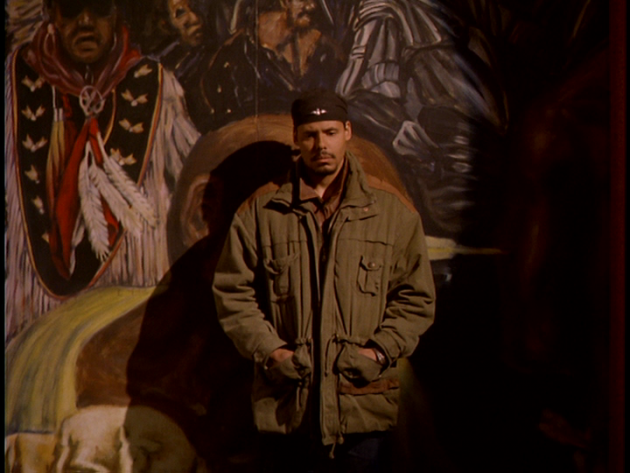
Messiah imagery is also used to reveal a sharp distinction in Rude between Luke and his brother Reece; while the former embodies the Rastafarian message, the latter has internalized the racism intrinsic to Babylon and given voice by Yankee. This self-hatred bred from racism is also what lured Luke away from his roots and, therefore, from walking an enlightened path (Melnyk 149). Every male character in the movie seems to perpetuate a black stereotype (the drug dealer, the athlete, the sexualized woman), which, as Melnyk points out, are all symptoms of Babylon’s influence on the black community, which seems willing to conform to these stereotypes in order to interact and integrate with the white world (152). However, Virgo often shows these stereotypes in order to deconstruct and dismantle them, exposing the façade behind which Babylon tries to hide and flatten the different personalities of a heterogeneous black community.
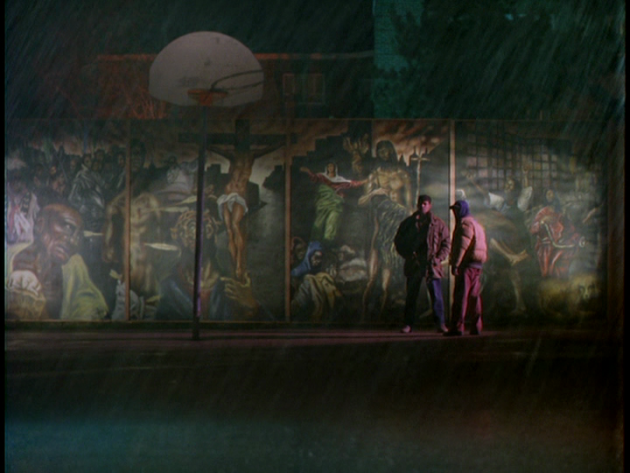
Luke, the most important of the film’s Messiah figures, has found a way to redeem himself through art. Every night he paints a new part of a mural that can be described as a powerful re-definition of Christian imagery: a crucified black Jesus surrounded by violence and death (149). Interestingly, the mural is in a basketball court, which, if we consider basketball as a stereotypically “black sport,” serves the aforementioned purpose to re-discuss and re-define pre-fixed concepts. The Black Jesus could represent the artist himself (meaning both Luke the painter and Virgo the filmmaker), as well as the rest of his community. Painting seems to be Luke’s way of expressing frustration towards the system which he used to be part of and his redemption is dependent on reclaiming that space not only as his own, but also as belonging to everyone else in his community. With a mural representing a black version of the crucifixion as well as scenes of slavery and a decadent city (the biblical Babylon), the basketball court becomes a space of a people’s collective memory, which the contemporary griot perpetuates through storytelling. Within the stereotypes constructed by the white society of Babylon, Luke, the Messiah, refuses those labels and uses his artistic talent to express his anger towards class privilege and the oppression of his people. It is only at the end of the movie that the symbol of white post-colonialism, Yankee, is finally defeated, dying in front of Luke’s mural, and blackness can rejoice.
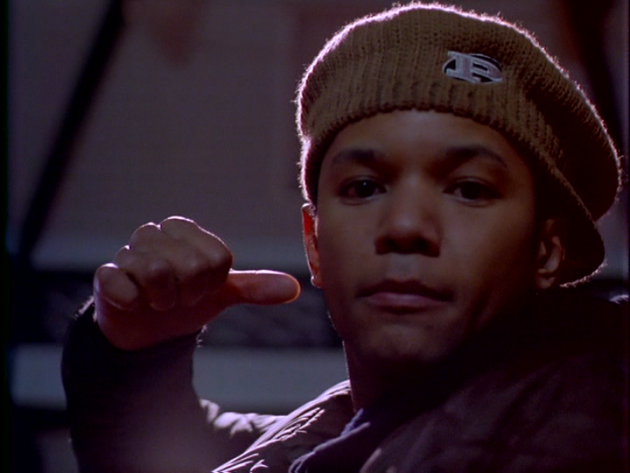
The film’s third protagonist, a young boxer named Jordan, is first shown talking with his sparring partner, Curtis, with whom he will slowly develop a romantic relationship. His storyline offers an opportunity to analyze the representation of gender roles in the movie and its deconstruction of stereotypical black manhood. Near the beginning of the film, Jordan is pressured by his fellow boxers to assault a gay black man accused of sexually molesting one of them, the only white man among his friends. The way the assault sequence is filmed recalls a shot from Do the Right Thing, in which Radio Raheem’s fists are thrown directly at the camera, showing a ring that spells “love” on his right hand, and a ring that spells “hate” on his left hand. The scenes might appear quite different, one being more dramatic and the other more playful, but they present a similar conundrum that, according to McKelly, is the product of a “generation torn between two worlds” and “double consciousness” (216). Radio Raheem, in fact, explains that “one hand is always fighting the other,” playfully summarizing the eternal duality between good and evil, which, according to the character, eventually culminates with the victory of love (218). In a similar way, Jordan finds himself choosing between love and hate – the latter between a symptom of Babylon’s malady and negative influence. This becomes clear in the sequence where Jordan frantically runs from the park, while “Machine Gun” by Jimi Hendrix plays on the soundtrack. The lyrics of the song seem particularly apt:
Evil man make me kill ya
Evil man make you kill me
Evil man make me kill you
Even though we’re only families apart (Hendrix)
It is telling that the film shows a group of black men willing to attack a member of their community, their “family,” due to accusations from a white man. This reflects the influence white characters have on the ghettoized community, exploiting their insecurities to exercise their privilege and power. In this case, those insecurities come from the attempts to fit in a society that constructs manhood in a certain way, and in which black men are expected to be hyper-masculine.
“Machine Gun”, however, is not the only example of Virgo’s eclectic use of music. A central element of the film is the repeated use of the highly spiritual “Many Rivers to Cross,” written and sung by Jimmy Cliff, who not coincidentally played the outlaw-messiah figure Ivanhoe Martin in The Harder They Come (which also prominently features the song). This is a key instance of the religious symbolism used in the movie, in light, for example, of the name chosen for the young boxer, the biblical “Jordan.” The river Jordan, also known as the “River of God,” was the last obstacle between the Israelites, led by Joshua after the death of Moses, and the Promised Land (Smith, 29-30). Since the overflowing of the water had made the crossing particularly dangerous, they had to show complete faith in the Power of God, who eventually helped them as he had helped Moses crossing the Red Sea (30). In terms of the song’s lyrics, Cliff’s “Many Rivers to Cross” seems to refer to the several obstacles encountered by the black populations of the diaspora (“Wandering I am lost as I travel along”), encapsulating the message that salvation is possible only through hardship (30). More specifically, in the context of the film, it is a sign that, as the river was the last obstacle between the people of God and the Promised Land, Jordan needs to overcome his initial subjugation to the insidious schemes of Babylon and its pre-fixed stereotypes in order to be redeemed and find salvation.
The power of the film’s most blatant villain, Yankee, is mostly cerebral, subtly exercising control of his gang in a highly manipulative way, while Reece, for example, seems to rely mainly on physical intimidation, acting like a marionette whose strings are controlled by an empowered white male. The messiahs of the film, however, guided by Rude’s mystical voice, refuse to listen to the white voices that preach division within the black community and instead fight against the system which is the real enemy. By showing the struggles of Jordan as a gay black man, Virgo deconstructs another racial stereotype created by Babylon, challenging the social construction of black hyper-masculinity as synonymous with mere physical force and violence. Luke is another case of wounded black manhood, since he cannot provide for his son and depends on his wife financially. However, even though he might not be able to buy his son a new pair of shoes to replace the boy’s old, unbranded pair, he can lead the young boy through the tempting streets of Babylon, preventing him from falling under its spell. As a talented artist, Luke’s art is his legacy and a source of strength not rooted in a stereotype of black masculinity.
If Luke and Jordan are examples of male characters who subvert popular stereotypes, Maxine is a female character who serves a similar purpose. She does not depend on a man financially and, after being exploited by her boyfriend, she reaffirms control over her body and, finally, forgives herself for her past sins. In Rude, therefore, racial identity intersects with class, gender and power, which is what makes the movie such an unusual and thought-provoking piece of Canadian cinema. If Virgo’s portrayal of whiteness might appear unrelentingly negative, in fact, the movie treats white characters in much the same way that “white cinema” has treated black characters, reducing them to disempowering stereotypes. In this context, Virgo carefully inserts elements of Rastafarianism and Christianity into the narrative, depicting religion not as a punishing and strict dogma, but as a liberating force that can guide the ghettoized members of the community on a journey of self-discover and empowerment.
Bibliography
Ceccato, Sabrina. “Cinema in Jamaica – The Legacy of Perry Henzell’s The Harder They Come.” Imaginations, vol. 6, no. 2, 2015.
Harcourt, Peter. “Faces Changing Colour Changing Canon.” Cineaction, vol. 43, no. 2-9, 1998.
Hendrix, Jimi. “Machine Gun.” Band of Gypsies. Capitol Records. 1970.
Martin, Michael T. Cinemas of the Black Diaspora. Detroit, Wayne State Univ. Press, 1998.
McKelly, James C. “The Double Truth, Ruth: Do the Right Thing and the Culture of Ambiguity.” African American Review, vol. 32, no. 2, 1998, pp. 215–227. JSTOR, www.jstor.org/stable/3042120.
Melnyk, George. “The Diasporic City: Postcolonialism, Hybridity, and Transnationality in Virgo’s Rude (1995) and Mehta’s Bollywood/Hollywood (2001).” Film and the City: The Urban Imaginary in Canadian Cinema, Oct. 2014, doi:10.15215/aupress/9781927356593.01.
Petty, Sheila. Contact Zones. Detroit, Wayne State University Press, 2008.
Smith, Matthew III. Crossing Jordan: Risking It All to Walk in the Favor of God. Dallas, Saint Paul Press, 2008.
Yawney, Carol Diane. Lions in Babylon: The Rastafarians of Jamaica as a Visionary Movement. Montreal, McGill University, 1978.
White, Carmen M. “Rastafarian Repatriates and the Negotiation of Place in Ghana.” Ethnology, vol. 49, no. 4, 2010.
FilmographyHenzell, Perry, director, The Harder They Come, International Films, 1972.
Lee, Spike, director. Do The Right Thing. Universal, 1989.
Scott, Ridley, director. Blade Runner. Warner Bros, 1982.
Virgo, Clement, director. Rude. Conquering Lion Pictures, 1995.



